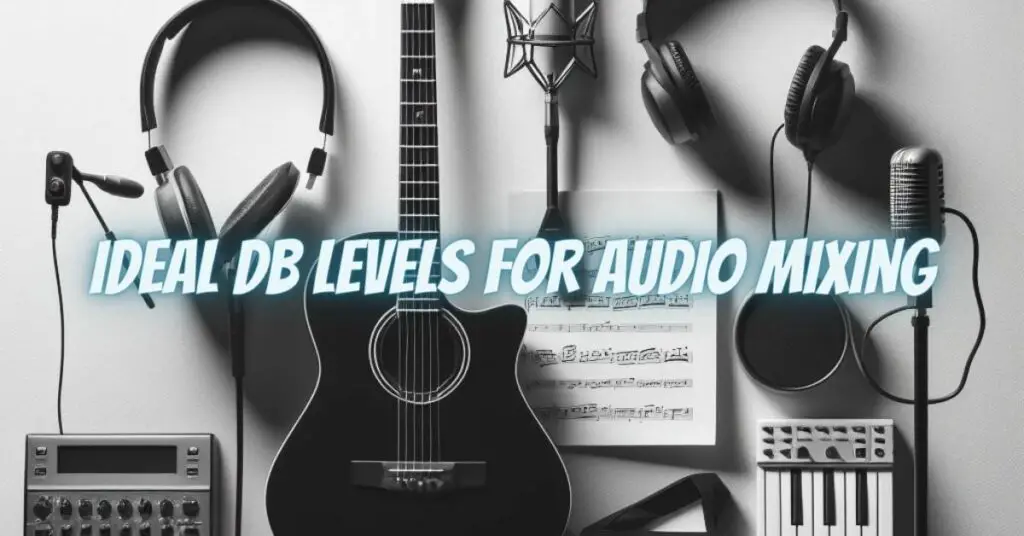The world of audio mixing is a delicate and complex craft where various elements come together to create a balanced and pleasing sonic experience. Among the key considerations for audio engineers and producers is determining the optimal dB level for mixing. In this article, we will explore the role of dB levels in audio mixing, discussing the recommended practices for achieving professional, well-balanced mixes.
Understanding Decibels (dB)
Decibels (dB) are a logarithmic unit used to measure the relative intensity or amplitude of a sound. In the context of audio, dB levels are used to express how loud or quiet a signal is. The dB scale is essential in audio production for setting the volume, ensuring a balanced mix, and preventing distortion.
dB Levels in Mixing
The ideal dB level for mixing can vary based on the specific stage of the mixing process and the type of audio you’re working with. Here are some key considerations for different stages of mixing:
- Gain Staging:
- Recording Phase: During recording, it’s essential to set an appropriate input level to avoid clipping or distortion. For digital audio, a common practice is to aim for an average level around -18 dBFS (decibels relative to full scale) to provide sufficient headroom.
- Mixing Phase: In the mixing stage, you’ll typically work with tracks that have already been recorded. It’s important to maintain a consistent gain structure across all tracks to ensure that no single track is too loud or too quiet.
- Mix Bus and Master Bus:
- Mix Bus: When summing all tracks together on the mix bus, it’s common to aim for an average level between -18 dBFS and -6 dBFS. This leaves enough headroom for processing and avoids clipping on the master bus.
- Master Bus: While mixing, it’s advisable to leave a minimum of 3 to 6 dB of headroom on the master bus. This allows room for further processing and mastering.
- Individual Tracks:
- Lead Vocals: Lead vocals are often considered the central focus of a mix. Levels for lead vocals can vary but typically range from -6 dBFS to -3 dBFS. This level ensures they sit well in the mix without overpowering other elements.
- Drums and Percussion: The level of drums and percussion tracks will vary depending on the style and genre of music. A good starting point is often -12 dBFS to -6 dBFS, with adjustments made as needed.
- Other Instruments: The levels of other instruments should be adjusted to complement the lead vocals and other central elements. Typically, they will fall within the range of -12 dBFS to -6 dBFS.
- Dynamic Range:
- Maintaining dynamic range is crucial for a well-balanced mix. Dynamic range allows elements in the mix to breathe and adds depth and clarity. Be mindful of not over-compressing or over-limiting, which can reduce dynamic range.
- Monitoring Environment:
- It’s crucial to consider the monitoring environment and system when setting dB levels. Proper studio monitor calibration ensures that what you hear is an accurate representation of the mix.
The best dB level for mixing is a range rather than a fixed number, and it depends on the stage of mixing and the specific tracks being worked on. Proper gain staging and attention to headroom are essential to avoid clipping and distortion, while maintaining a dynamic and well-balanced mix. Ultimately, the goal in audio mixing is to achieve a mix that not only sounds great but also translates well to a wide range of listening environments and playback systems. Experiment, trust your ears, and use the recommended dB levels as starting points to create polished and professional mixes.

